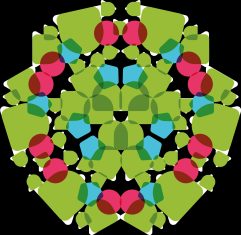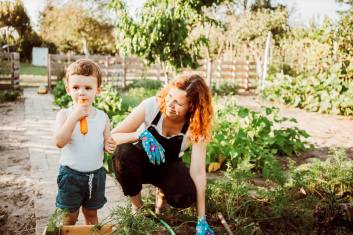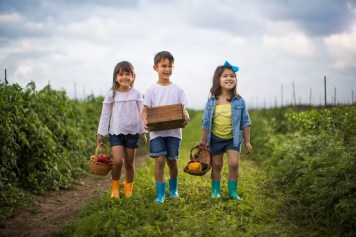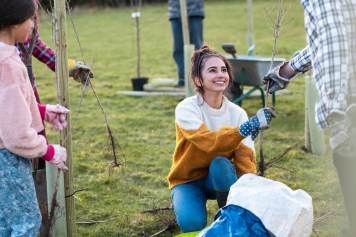Teaching a primary sustainability curriculum
Jody Ellenby asks what an effective sustainability curriculum looks like when implemented in a primary or elementary classroom.
What do we mean by sustainability?
I recently hosted a webinar for an international audience of educators. When asked to define sustainability responses included “coexisting with nature to help everyone and everything thrive over time” and that “we are able to progress and meet our needs without compromising future generations’ resources.”
There are many definitions of sustainability, but perhaps my favorite is from a 7-year-old in New York:
“[Sustainability] means when people get what they want without trashing the world so animals and other people can get what they want and need.”
 As we explored adding Sustainability to the Oxford International Curriculum, we heard from teachers a clear need to feature sustainability more in their classroom, but a lack of clarity on how best to do so.
As we explored adding Sustainability to the Oxford International Curriculum, we heard from teachers a clear need to feature sustainability more in their classroom, but a lack of clarity on how best to do so.
Click on the image to follow the link to – Oxford International Curriculum brings sustainability into the classroom
A particular challenge is how sustainability sits alongside other priorities: there are so many opportunities to integrate Math, Science, English, and more in a sustainability curriculum. The curriculum design team at Oxford chose to focus on integrating Wellbeing and Global Skills – fostering children’s creative and critical thinking, cooperation, and leadership between themselves and their community. We hope to inspire children about changes they can make.
Start with a sense of place
I have learned from my experience as a primary teacher, that cultivating a strong sense of place and belonging is an essential first step towards developing the idea that a healthy and sustainable future is not only possible, but can then be acted upon to make that future happen. I have a particularly close connection to my own ‘place’. I’m a second-generation tropical fruit and vegetable grower in Florida where we’re continually adapting to a changing climate.
As educator David Sobel said:
“If we want children to flourish, to become truly empowered, let us allow them to love the earth before we ask them to save it.”
Love for a specific place makes possible love for other places, which is necessary if we are asking children to be global stewards. If children try to address big problems without having first developed an understanding of the impact of their actions locally — whether that is a fruit farm in Florida or a fishing village in the Philippines — there is a risk nature is perceived as something far away with big, uncontrollable problems. Far from inspiring action, this approach instills fear.
Creating a connection with place

‘Place’ will mean different things to different children, depending on their developmental stage. Research shows that 4 -7-year-olds put homes, schools, and their immediate surroundings at the center of their sense of place.

As children develop from ages 8-11, this expands to include their wider community and bioregion, meaning the surrounding ecosystems that share similar natural characteristics and usually the same sources of water and types of habitat.

Beyond 11, children are more equipped to grapple with global concepts or get excited by the wider world, especially if strong foundational understandings of their own place have already been built.
Connections can be built with nature anywhere. It’s a myth that you need to go somewhere else to be ‘part of nature’. It’s all around us Even small urban details such as an eroding pipe or the people and goods at the corner shop are all part of our alive, unique place. We can uncover how our built environment interacts with its natural host and how, if we take care of ‘our place’, it takes care of us in return.
Imagining the world we want to live in
The second, critical building block for a developing an effective approach to teaching sustainability, involves stimulating a child’s vision. We can engage children’s imaginations by asking them to envision the kind of future they want. This isn’t about solving problems; it’s about bringing into existence something you care about.
Children, especially younger children. have the power to imagine and envision something else. Older students and adults, often need more help — they might find it easier to say what they don’t want which can be flipped around to focus on what they do want instead. If children can define a goal for their work, the greater their sense of agency.
Three tips for sustainability activities
Using the key ideas of ‘place’ and ‘vision’ as starting points, here are three approaches for engaging children with a sustainability curriculum. In many ways this is all just good practice: you know what to do!
1. Close observation and naming
There is a power in knowing the precise names of plants and creatures in your area. For example, 5-year-olds could investigate animals native to their local area and create cards illustrating and describing how animals have adapted to that place.
2. Stimulate questioning
Young children of course love asking questions — it’s why I love primary education — not just to find information, but to get adults to pay attention to the world through their eyes. Encourage this!
For example, we encouraged 3–4-year-olds to ask questions about their classrooms, people, trees, play structures and other features that make up their school. Get them to identify the questions that will help them understand ‘their place’ – who and what lives and grows well here, what the challenges are to growth and what the history of this place is. Are there any signs of how human infrastructure and wildlife work together?
3. Get practical!
Provide opportunities for worthy student work that is part of the real world. For example, in my school, we asked 6 and 7-year-olds to create take-home compost containers out of recycled materials, along with instructions on how to compost as part of a project to reduce food waste and support soil health.
Impact
In my experience the learning outcomes of this approach is simple: the more children believe in their vision and have that sense of belonging in a place, the more they can be agents of change and inventors of the future.
 Jody Ellenby, is an author on the Oxford International Curriculum for Sustainability. She is a former elementary teacher and school leader in the United States.
Jody Ellenby, is an author on the Oxford International Curriculum for Sustainability. She is a former elementary teacher and school leader in the United States.
FEATURE IMAGE: Image by Rudy and Peter Skitterians from Pixabay
Support Images: Sustainability Kaleidoscope – kindly provided by Jody, Vesnaandjion , THEPALMER & SolStock on iStock

